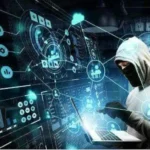In today’s hyper-connected world, cyberattacks have become a constant threat to individuals, businesses, and governments. Recent real-life hacking incidents like the Kadokawa-Niconico attack (2024) and the infamous Target data breach (2013) highlight how hackers exploit vulnerabilities, causing financial loss, data compromise, and reputational damage. This blog dives into these stories, uncovers key lessons, and provides actionable remedies to secure your digital assets.
1. The Kadokawa-Niconico Cyberattack (2024)
What Happened?
In June 2024, Japanese media giant Kadokawa Corporation and its video platform Niconico faced a devastating ransomware attack by the hacking group BlackSuit. The attack led to:
Disruption of services for two months.
Leakage of over 254,000 users’ data, including sensitive information from their educational platform.
A ransom demand for 1.5 terabytes of stolen data.
Despite their recovery efforts, the incident highlighted vulnerabilities in their network and lack of adequate backup systems
2. The Target Data Breach (2013)
What Happened?
In 2013, hackers infiltrated Target Corporation by compromising a third-party HVAC vendor. Using stolen credentials, they gained access to the retailer’s point-of-sale (POS) system, stealing:
40 million credit and debit card numbers.
70 million customer records, including names and addresses.
This breach cost Target over $200 million in fines, settlements, and security upgrades.
Key Takeaways from These Cyberattacks
1. Third-Party Risk: Both cases highlight how attackers exploit weak links in supply chains and third-party vendors.
2. Data Sensitivity: The lack of encryption in Target’s POS system and Kadokawa’s compromised data emphasized the need for securing sensitive information.
3. Delayed Response: Kadokawa’s long service disruption underscored the importance of having a well-tested incident response plan.
10 Remedies to Protect Against Cyberattacks
1. Implement Strong Authentication
Use multi-factor authentication (MFA) across all systems. This adds an extra layer of security, ensuring that even if credentials are stolen, unauthorized access is prevented.
2. Regular Backups
Maintain regular backups of critical data in secure offline locations. This ensures you can recover from ransomware attacks without paying a ransom.
3. Monitor Third-Party Access
Vet all vendors and partners before granting access to your network. Implement zero-trust policies and regularly monitor their activities.
4. Encrypt Sensitive Data
Ensure all customer data and payment information are encrypted, both at rest and in transit. Encrypted data is harder for hackers to use.
5. Conduct Employee Training
Educate your employees on identifying phishing emails, suspicious links, and other forms of social engineering. Regular training is essential to keep cybersecurity top of mind.
6. Network Segmentation
Segment your network to prevent lateral movement by hackers. Critical systems, such as POS or financial databases, should be isolated from less secure areas.
7. Install Robust Security Systems
Use firewalls and antivirus software to block unauthorized access.
Deploy intrusion detection and prevention systems (IDPS).
8. Regular Security Audits
Conduct periodic vulnerability assessments and penetration testing to identify weak points before attackers do.
9. Incident Response Plan
Have a detailed and well-practiced incident response plan in place. This minimizes damage during a cyberattack and ensures a faster recovery.
10. Keep Systems Updated
Regularly update your software, hardware, and firmware to patch vulnerabilities. Cybercriminals often exploit outdated systems.
FAQs
1. What are the signs of a potential cyberattack?
Some signs include unexpected system slowdowns, unauthorized access attempts, and unusual activity on accounts.
2. How can small businesses protect themselves?
Small businesses should focus on:
Using secure passwords and MFA.
Backing up data.
Regularly updating software.
3. What is the role of encryption in cybersecurity?
Encryption converts sensitive data into unreadable formats, making it harder for attackers to misuse stolen data.
Conclusion
Cyberattacks like those targeting Kadokawa-Niconico and Target serve as stark reminders of the importance of robust cybersecurity. By learning from these incidents and adopting proactive measures, individuals and businesses can significantly reduce their risk of falling victim to hackers.
Don’t wait for an attack to happen—take action today to protect your digital assets.
Related posts:
 Best Cybersecurity Measures in 2025: Protecting Your Digital World
Best Cybersecurity Measures in 2025: Protecting Your Digital World
 Teaching Kids Cybersecurity in the Digital Age: Essential Tips for Parents
Teaching Kids Cybersecurity in the Digital Age: Essential Tips for Parents
 How to Protect Your Laptop from Cyber Attacks
How to Protect Your Laptop from Cyber Attacks
 How to Cure Indigestion Caused by Overeating During Holi with Home Remedies
How to Cure Indigestion Caused by Overeating During Holi with Home Remedies
 Unleashing the Chanakya Within You: Timeless Leadership Lessons for Personal and Professional Success
Unleashing the Chanakya Within You: Timeless Leadership Lessons for Personal and Professional Success
 Control Anger and Ego: Lessons from Hanuman on Jyeshtha Mangal
Control Anger and Ego: Lessons from Hanuman on Jyeshtha Mangal
